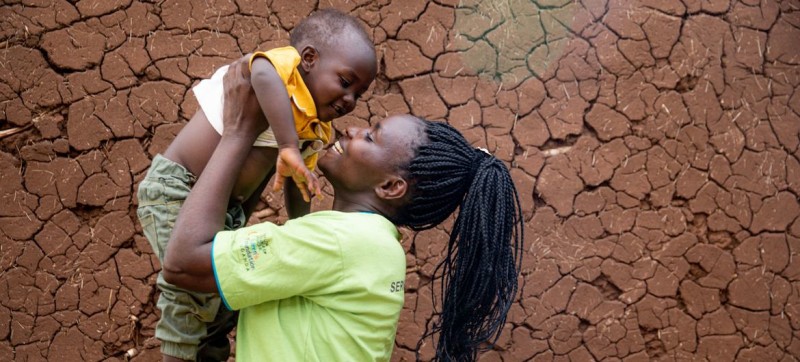© UNICEF/Karin Schermbrucker Phiona works as a Peer Mother at the Rugaga IV Health Centre in Uganda to train and support mothers to deliver HIV-free babies.
The first ministerial meeting of the Global Alliance to end AIDS in children marked a step up in action to ensure all boys and girls with HIV can access life-saving treatment, and that HIV-positive mothers can have babies free from the virus.
Tweet URL
Ministers and representatives laid out plans which include providing testing to more pregnant women and linking them to care, as well as finding and caring for infants and children living with HIV.
Hope and heartbreak
International partners set out how they would support them in meeting these objectives.
“This meeting has given me hope,” said Winnie Byanyima, Executive Director of UNAIDS, the UN agency leading the global fight to end the disease.
“An inequality that breaks my heart is that against children living with HIV, and leaders today have set out their commitment to the determined action needed to put it right,” she added.
Death every five minutes
Currently, around the world, a child dies from AIDS-related causes every five minutes.
Roughly half of children living with HIV, 52 per cent, are on life-saving treatment, whereas 76 per cent of adults are receiving antiretrovirals, which the World Health Organization (WHO) has described as “one of the most glaring disparities in the AIDS response.”
Furthermore, although children comprise just four per cent of people living with HIV, they account for 15 per cent of all AIDS-related deaths.
Commitment and support
The UN Children’s Fund (UNICEF) welcomed the leaders’ commitments and pledged the agency’s full support.
Every child has the right to a healthy and hopeful future, said UNICEF Associate Director Anurita Bains, adding “we cannot let children continue to be left behind in the global response to HIV and AIDS.”
The Global Alliance to end AIDS in children was unveiled at the AIDS conference in Montréal, Canada, in July 2022.
The outcome of its first ministerial meeting, the Dar-es-Salaam Declaration for Action to end AIDS in Children, was endorsed unanimously.
No room for complacency
Tanzania’s Vice-President, Philip Mpango, called for moving forward as a collective.
“All of us in our capacities must have a role to play to end AIDS in children,” he said. “The Global Alliance is the right direction, and we must not remain complacent. 2030 is at our doorstep.”
Tanzania is among the 12 countries with high HIV burdens that have joined the Alliance in the first phase.
The others are Angola, Cameroon, Côte d’Ivoire, the Democratic Republic of the Congo, Kenya, Mozambique, Nigeria, South Africa, Uganda, Zambia, and Zimbabwe.
Early testing and treatment
Work will centre on four pillars, including early testing and optimal treatment for infants, children and adolescents; as well as closing gaps in treating HIV-positive pregnant and breastfeeding women, to eliminate transmission to their babies.
The countries will also focus on preventing new HIV infections among pregnant and breastfeeding adolescent girls and women, in addition to addressing rights, gender equality and structural barriers that hinder access to services.
Progress is possible!
UNAIDS believes that progress is possible, as 16 countries and territories have already been certified for validation of limiting mother-to-child transmission of HIV and/or syphilis.
While HIV and other infections can be transmitted during pregnancy or breastfeeding, prompt treatment, or pre-exposure prophylaxis (PrEP) for at-risk mothers, can interrupt the process.
Last year, Botswana became the first African country with high HIV prevalence to be validated as being on the path to eliminating vertical transmission of HIV, meaning the country had fewer than 500 new HIV infections among babies per 100,000 births.
The vertical transmission rate in Botswana is now two per cent, versus 10 per cent a decade ago.




Comments are closed.